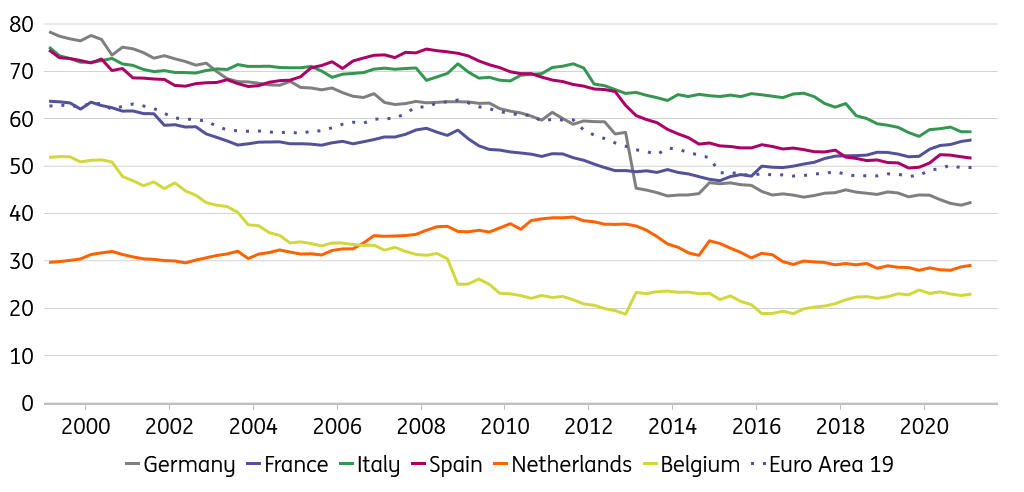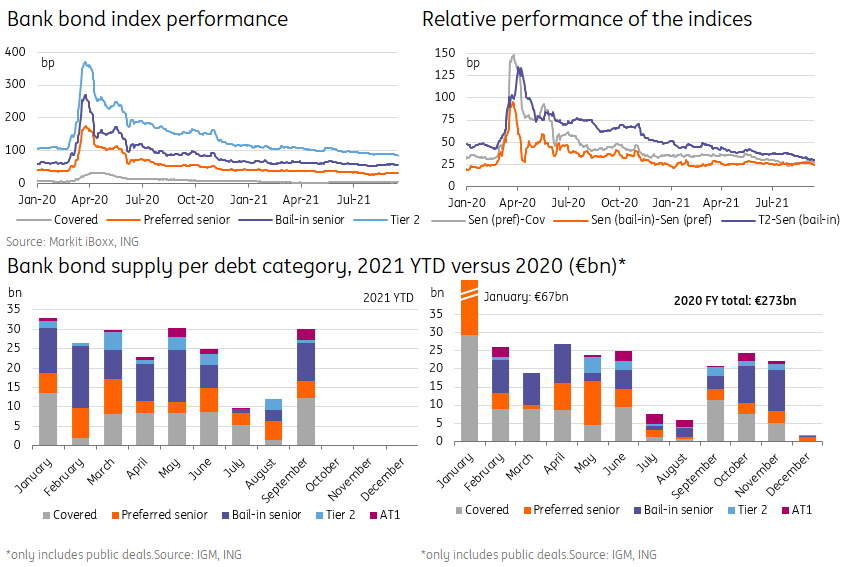Bank Pulse: Eurozone funding diversification progresses slowly
European countries traditionally rely heavily on domestic banks to fund their economies. Over the past two decades, this bank dependence has slowly diminished. Yet the gap with more market-financed economies such as the UK and US remains large.
Diversification of European business funding
After the 2008 financial crisis and its aftermath in Europe, policymakers concluded (among other things) that European businesses should diversify their funding, reducing their reliance on bank finance. The Capital Markets Union (CMU) was conceived to support this process, aiming to integrate Europe’s fragmented financial markets.
The CMU has proven to be a tough goal to realise, though the European Commission remains committed. But how is Europe in the meantime doing on bank dependence? For households, we can be brief. When the euro was created in 1999, 88.1% of household borrowing came from banks. After some minor fluctuations over the past two decades, that figure stands at 86.5% today.
It is more interesting to look at non-financial business funding. Taking together loans and bonds (but excluding trade and intercompany credit), 63% of business funding was supplied by banks in 1999. Typically the market share of domestic banks was higher in large countries than in smaller ones. In 1999, domestic banks provided over 75% of financing in Germany, Italy and Spain. For Belgium, the domestic share was 52%, and for Finland and the Netherlands even below 40%.
Bank share in non-financial businesses debt outstanding (%)

Figures have converged since 1999
These figures have converged somewhat since 1999. The Eurozone-wide bank share in non-financial business funding peaked at 64% at year-end 2008, and started a gradual decline that lasted six years. By 2015, the share of banks stabilised around 48%.
As the pandemic engulfed Europe in 2020, the crisis response in several countries relied heavily on bank lending. Indeed the Eurozone-wide bank share increased again to 50%, driven mainly by strong bank lending growth in France, Spain and Italy.
How successful has the mission to diversify non-financial business funding been?
So looking at this data spanning over two decades, has the mission to diversify non-financial business funding succeeded? Let us say it is work in progress. Between 2008 and 2015, when banks were licking their wounds and recovering from the credit crisis, non-bank lenders increased their market share. Yet the CMU was not put formally on the European Commission agenda until 2014, and developments nonetheless stagnated from 2015 onwards. Today, dependence on domestic banks remains highest in Italy, followed by France and Spain. The 50% Eurozone average stands in sharp contrast to the UK, where the comparable percentage is 37% (down from 41% in 1999), and the US, where it is just 27% (29% in 1999). There is more work to do.

Download
Download articleThis publication has been prepared by ING solely for information purposes irrespective of a particular user's means, financial situation or investment objectives. The information does not constitute investment recommendation, and nor is it investment, legal or tax advice or an offer or solicitation to purchase or sell any financial instrument. Read more

